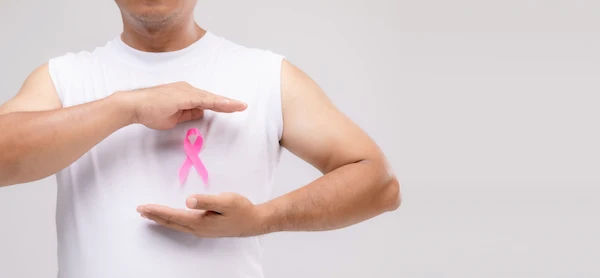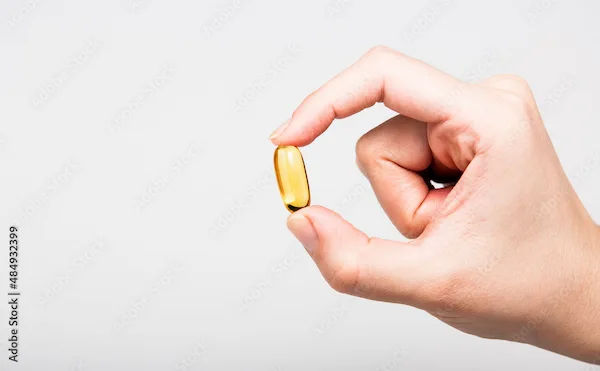Breast Cancer Symptoms and Signs
Learn to recognize the common symptoms and signs of breast cancer, including lumps, skin changes, and nipple discharge. Early detection is crucial for effective treatment and better outcomes.


Breast cancer is one of the most common cancers among women, but early detection can significantly improve treatment outcomes. Knowing the symptoms and signs can help you take timely action. This article will guide you through the key warning signs, risk factors, and steps you can take to protect your health.
Common Symptoms of Breast Cancer
Breast cancer can present in different ways, and not all symptoms are the same for everyone. Some signs are noticeable, while others may only be detected through screening. Here’s what to look out for:
1. A Lump in the Breast or Armpit
- The most common sign is a new, painless lump or thickening in the breast or underarm area.
- Not all lumps are cancerous, but any new or unusual lump should be checked by a doctor.
2. Changes in Breast Shape or Size
- One breast may become larger or lower than the other.
- Visible swelling, dimpling, or puckering of the skin (sometimes resembling an orange peel).
3. Nipple Changes
- Nipple turning inward (inversion).
- Discharge (other than breast milk) that may be bloody or clear.
- Redness, scaling, or crusting around the nipple.
4. Pain or Tenderness
- While breast cancer is often painless, some women experience discomfort or persistent pain in one area.
5. Skin Changes
- Redness, warmth, or thickening of the breast skin.
- Sores or ulcers that don’t heal.
Consult Top Specialists
When to See a Doctor?
If you notice any of these symptoms, don’t panic—many breast changes are benign (non-cancerous). However, it’s essential to consult a doctor if:
- A lump persists for more than a few weeks.
- There are sudden changes in breast appearance.
- You have nipple discharge (especially if bloody).
Early detection saves lives, so never ignore unusual changes.
Who Is at Risk?
While breast cancer can affect anyone, certain factors increase the risk:
Non-Modifiable Risk Factors
- Gender: Women are at higher risk, though men can also develop breast cancer.
- Age: Risk increases after 50.
- Family History: Having a close relative (mother, sister, daughter) with breast cancer raises risk.
- Genetic Mutations: BRCA1 and BRCA2 gene mutations increase susceptibility.
Modifiable Risk Factors (Lifestyle Changes Can Help!)
- Obesity: Excess weight increases risk, especially after menopause.
- Alcohol Consumption: Regular drinking raises risk.
- Physical Inactivity: A sedentary lifestyle may contribute.
- Hormone Replacement Therapy (HRT): Long-term use can increase risk.
How to Reduce Your Risk?
While some risk factors can’t be changed, adopting a healthy lifestyle can help lower your chances of developing breast cancer:
1. Maintain a Healthy Weight
- Eat a balanced diet rich in fruits, vegetables, and whole grains.
- Limit processed foods and sugary drinks.
2. Stay Active
- Aim for at least 30 minutes of exercise most days
- Walking, yoga, and swimming are great options.
3. Limit Alcohol
- If you drink, limit it to one drink per day (for women).
4. Breastfeed If Possible
- Breastfeeding may lower breast cancer risk.
5. Regular Screenings
- Mammograms are the best way to detect early breast cancer.
- Women aged 40+ should discuss screening with their doctor.
Diagnosis and Next Steps
If you notice symptoms or have risk factors, your doctor may recommend:
- Clinical Breast Exam: A physical check by a healthcare provider.
- Mammogram: An X-ray of the breast to detect abnormalities.
- Ultrasound or MRI: Additional imaging tests if needed.
- Biopsy: A small tissue sample is taken to check for cancer cells.
If diagnosed early, breast cancer is highly treatable with surgery, radiation, chemotherapy, or hormone therapy.
Conclusion
Breast cancer can be scary, but knowledge is power. By staying aware of symptoms, maintaining a healthy lifestyle, and getting regular check-ups, you can take control of your health.
If you have concerns or notice any changes, don’t wait—consult a doctor today. Need a consultation? Book an appointment with Apollo24|7’s expert oncologists for personalised advice and screenings.
Consult Top Specialists
Consult Top Specialists

Dr Sunita Samleti
Oncologist
18 Years • M.D. (Pathology)- TN Medical College, Mumbai University, Mumbai, Mar 2005 M.B.B.S. Grant Medical College, Mumbai University, Mumbai, Oct 1999
Chinagadila
Apollo Hospitals Health City Unit, Chinagadila

Dr Gowshikk Rajkumar
Oncologist
10 Years • MBBS, DMRT, DNB in Radiation oncology
Bengaluru
Apollo Clinic, JP nagar, Bengaluru

Dr. Sanchayan Mandal
Oncologist
17 Years • MBBS, DNB Raditherapy, DrNB Medical Oncology
East Midnapore
VIVEKANANDA SEBA SADAN, East Midnapore

Dr.sanchayan Mandal
Oncologist
17 Years • MBBS, DrNB( MEDICAL ONCOLOGY), DNB (RADIOTHERAPY),ECMO. PDCR. ASCO
Kolkata
Dr. Sanchayan Mandal Oncology Clinic, Kolkata

Dr. Raja T
Oncologist
20 Years • MBBS; MD; DM
Chennai
Apollo Hospitals Greams Road, Chennai
(175+ Patients)
Consult Top Specialists

Dr Sunita Samleti
Oncologist
18 Years • M.D. (Pathology)- TN Medical College, Mumbai University, Mumbai, Mar 2005 M.B.B.S. Grant Medical College, Mumbai University, Mumbai, Oct 1999
Chinagadila
Apollo Hospitals Health City Unit, Chinagadila

Dr Gowshikk Rajkumar
Oncologist
10 Years • MBBS, DMRT, DNB in Radiation oncology
Bengaluru
Apollo Clinic, JP nagar, Bengaluru

Dr. Sanchayan Mandal
Oncologist
17 Years • MBBS, DNB Raditherapy, DrNB Medical Oncology
East Midnapore
VIVEKANANDA SEBA SADAN, East Midnapore

Dr.sanchayan Mandal
Oncologist
17 Years • MBBS, DrNB( MEDICAL ONCOLOGY), DNB (RADIOTHERAPY),ECMO. PDCR. ASCO
Kolkata
Dr. Sanchayan Mandal Oncology Clinic, Kolkata

Dr. Raja T
Oncologist
20 Years • MBBS; MD; DM
Chennai
Apollo Hospitals Greams Road, Chennai
(175+ Patients)



